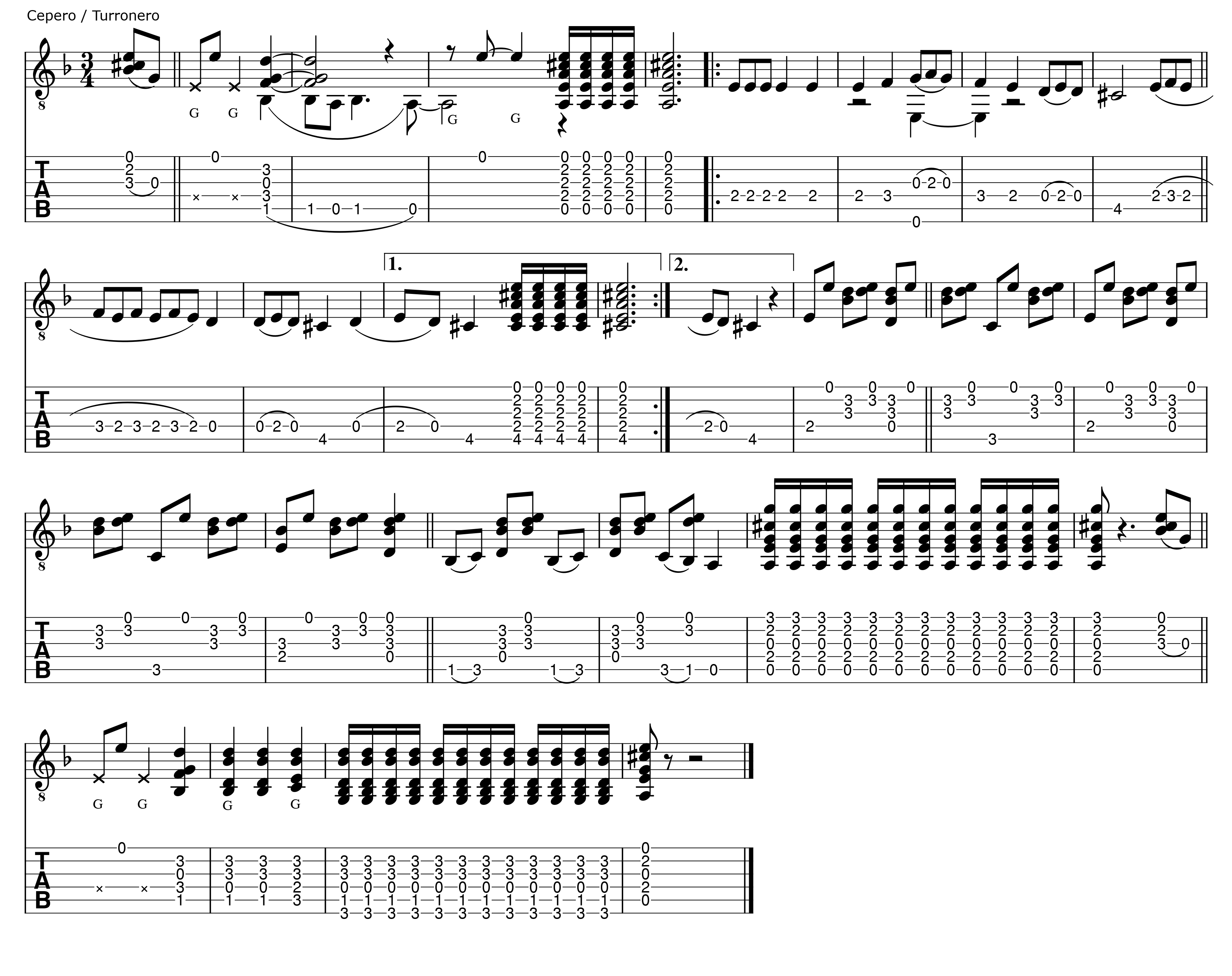
The falseta is from "Olivares del campo" with El Turronero (Cantes Viejos, 1976, Gramucis GM10430 and on the Medio Siglo anthology) and is just one small example of the brilliant creativity and unmistakable Jerez aire of Paco Cepero.
The notation is in 3/4 time (like soleá) and the double bar lines separate whole compases between beats 12 and 1. Capo at second fret. The idea is heard at 1:39.
The first and the last compás are basic bulerías rhythm; notice the difference between the two.
The first compás, step by step: index upstroke and slur on beat 12, a tap (G) on beat 1, another upstroke on the open first string on beat 1.5, a tap on beat 2 and a downstroke on beat 3. The symbol "X" indicates an index-finger downstroke (coinciding with the golpes) that can be muted, played clearly or omitted, as you prefer. There are many variations of this classic mechanism in the combination of slurs, taps and index strokes. For the downstroke on beat 3, touch your thumb with your index finger, press slightly and flick into the chord. The fifth-string slur starts on beat 4.5. Press with your left-hand fingertip, catching a bit of nail, at beat 6. Notice that the slur at the beginning of the compás (beat 12, third string) is the "call" and the last slur (beat 6, fifth string) is the "response." The slur at beat 6 rings into the following sequence: tap at beat 7, open first string at beat 7.5, another tap at beat 8, and rasgueado on beat 9 ending with the index upstroke on beat 10.
Here is a sample of this first compás that you can use to practice the basic rhythm.
In the second compás alternate your index and middle fingers for the picado until the thumb takes over at beat 12. In the third compás, notice the difference between the slurs at beats 4 and 6.
The repetition of the third compás leads into a classic thumb-index strumming pattern. Notice that it starts on beat 10 and that this idea usually starts from 12 onward. The up-down-up index strokes round out the edgy rhythmic counterpoint (the downstroke is normally omitted). The notation indicates the brushing of several strings, as usually happens with this technique, although Cepero is generally playing just the first string. He continues with the same technique up to the rasgueados (instead of alzapúa). This ancient mechanism of index counterpoint on the "and" of every beat is totally intuitive but requires great dexterity when it coincides with the thumb, especially at bulerías tempo, as heard in many recordings of Ramón Montoya, Antonio Moreno, Melchor de Marchena, Niño Ricardo and other guitarists of the past.
For these rasgueados, Cepero normally uses some kind of (e)-a-m-i fingering, although there are several possibilities, such as one beat of triplets and two beats of sixteenths (a-m-i, i-a-m-i, i-a-m-i, i) or two beats of sixteenths and one beat of quintuplets (a-m-i-i, e-a-m-i, i-e-a-m-i, i). The last rasgueado changes from G minor to A7 at some point during the ninth beat.
